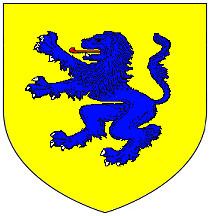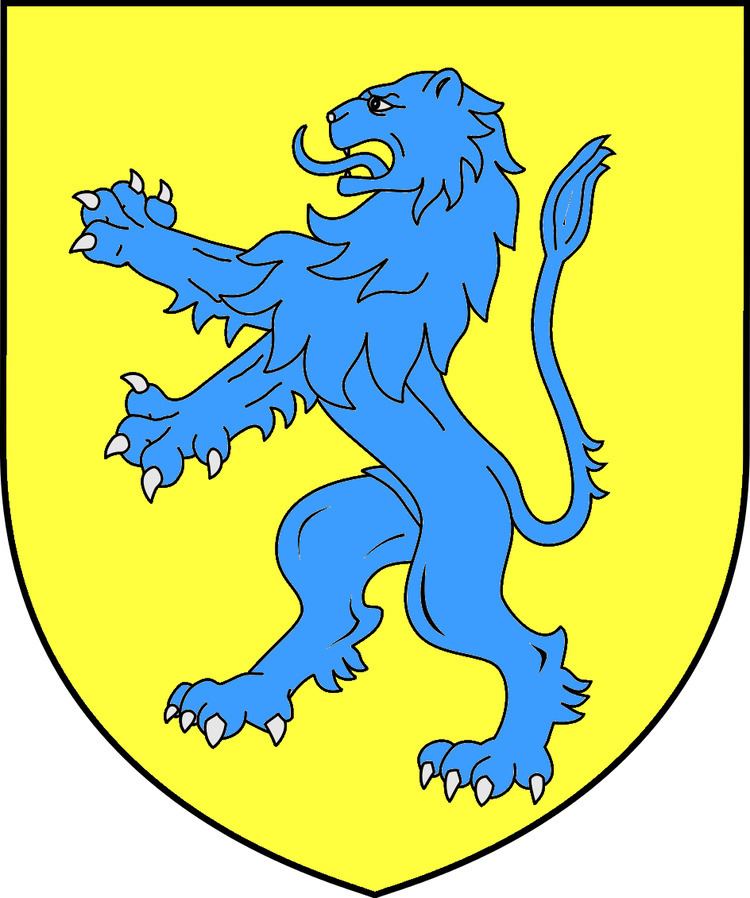Name Isabella Forz, | Died November 10, 1293 | |
 | ||
Isabel de Forz (Latinized as Isabella de Fortibus) (July 1237 – 10 November 1293) was the eldest daughter of Baldwin de Redvers, 6th Earl of Devon (1217–1245). On the death of her brother Baldwin de Redvers, 7th Earl of Devon in 1262 without children, she inherited suo jure (in her own right) the earldom and also the feudal barony of Plympton in Devon, and the Lordship of the Isle of Wight. After the early death of her husband and her brother before she was thirty years old, she inherited their estates and became one of the richest women in England, living mainly in Carisbrooke Castle on the Isle of Wight, which she held from the king as tenant-in-chief.
Contents

She had six children, all of whom died before her. On her death bed she was persuaded to sell the Isle of Wight to King Edward I, in a transaction that has ever since been considered questionable. Her heir to the feudal barony of Plympton was her cousin Hugh de Courtenay (1276–1340), feudal baron of Okehampton, Devon, who in 1335 was declared Earl of Devon.
Countess Wear, now a suburb of Exeter, is named after a weir that she built on the River Exe, and she is the subject of several legends and traditions.
Biography
Isabella was the eldest daughter of Baldwin de Redvers, 6th Earl of Devon (1217–1245) by his wife Amice de Clare (c. 1220 – 1284), daughter of Gilbert de Clare, 5th Earl of Gloucester. Her early life was apparently spent at Tidcombe near Tiverton.
At the age of 11 or 12 she became the second wife of William de Forz, 4th Earl of Albemarle, who held land in Yorkshire and Cumberland and was Count of Aumale in Normandy. When he died in 1260, their children were all under age, so the wardship of his heir (whose name is not known), and his estates passed to the king, Henry III. One third of her late husband's estates were granted to Isabella as her dower: this consisted of one third of Holderness, half of the barony of Cockermouth, and the honour of Skipton. She was also granted the custody of two of her sons, Thomas and William. King Henry's son, Edward, later King Edward I, was granted the other two thirds of the estates and the marriage of the heir.
Isabella had six children by William de Forz, but they all died before she did: her sons John and Teron died before their father; and Thomas, William and Avice had all died before April 1269, when her sole surviving daughter Aveline was married (see below). After the death of her husband, Isabella lived with her children and her mother, Amice, at Burstwick in Holderness. Isabella and Amice together purchased the two thirds of the honour of Holderness that Isabella did not already hold, and they administered the area jointly for some years.
In 1262 Isabella's brother Baldwin de Redvers, 7th Earl of Devon died and, subject to his widow's and his mother's dower rights, she inherited his lands in Devon, Hampshire, the Isle of Wight, and Harewood in Yorkshire. From then on she lived mainly at Carisbrooke Castle on the Isle of Wight. She used titles along the lines of "Countess of Aumale and of Devon" and "Lady of the Isle", and in her surviving charters she is regularly referred to as Isabella "de Fortibus".
In her mid-twenties, widowed for two years, then left with a rich dower, she was one of the richest heiresses in England, and a much-sought-after wife for several powerful and ambitious men. In 1264, Simon de Montfort (second son of Simon de Montfort, 6th Earl of Leicester) acquired the very valuable rights to her remarriage, but she refused to marry him and hid from him, at first in Breamore Priory in Hampshire, and later in Wales. Four years later, in November 1268, her marriage was granted to Edmund Crouchback, son of Henry III of England, but she did not marry him either. However her daughter Aveline (1259–1274) did marry Edmund in 1269, but she died childless four years later, aged 15.
Many of Isabella's estate accounts from her long period of widowhood have survived and have been subjected to much study. Her net income (not her total wealth) in the 1260s is known to have risen from £1,500 to £2,500, the latter of which would be equivalent to £2,258,398 in 2015.
From around 1274, her estates were being managed by Adam de Stratton, a notorious moneylender, in association with the Riccardi family of Lucca as her bankers. In 1276 she gave her chamberlainship of the exchequer in fee to Stratton, probably as a reward for his financial services and he continued as her chief financial official until at least 1286. She apparently owned her own copy of the statutes of the realm and was very litigious and with her advisers she prosecuted dozens of cases, both civil and criminal, through the judiciary.
It is known that King Edward I (1272–1307) had long wanted to acquire Isabella's estates. In 1276 he proposed that she should sell him the lands in southern England that she had inherited from her brother, but the conveyance was not completed. Then after her daughter and last surviving heir, Aveline, had died in 1274, a certain John de Eston was found (against expectations) by a jury at her inquisition post mortem to be Isabella's next heir. In 1278 this John de Eston quitclaimed her lands in the north and the County of Aumale and its associated lands to the Crown.
In 1293 the king reopened negotiations to acquire Isabella's southern lands, and while travelling from Canterbury, Isabella was taken ill and stopped near Lambeth. One of Edward's favourite servants, Walter Langton, rushed to her and wrote a charter to confirm the sale of the Isle of Wight to the king. It was read to the dying Isabella, who ordered her Lady of the Bedchamber to seal it. She died at Stockwell in the early morning of 10 November 1293, aged 56, and was buried at Breamore Priory in Hampshire.
Succession
After Isabella's death, the feudal barony of Plympton and eventually the earldom of Devon passed to her 17-year-old second cousin once removed, Hugh de Courtenay (1276–1340), feudal baron of Okehampton, Devon, who in 1335 was declared Earl of Devon. In 1315 he petitioned parliament, unsuccessfully, claiming his right to the lordship of the Isle of Wight and to the adjacent manor of Christchurch, Hampshire, as heir of Isabella.
Countess Wear, Exeter
Countess Wear, now a suburb of Exeter, takes its name from a fish weir on the River Exe about two miles below the city centre that Isabella de Forz is said to have built in the late 13th century. The details of the weir's construction are uncertain: a source of 1290 states that Isabella had it built in 1284 and thereby damaged the salmon fishing and prevented boats from reaching Exeter, but a later source of 1378 claims that she had had the weir built in 1272, leaving a thirty-foot gap in the centre through which boats could pass, until it was blocked between 1307 and 1327 by her cousin Hugh Courtenay.
Legends and traditions
Two legends exist which feature Isabella de Forz. One, that of the Seven Crosses, of which there are many variations, relates that she came across a poor man carrying a basket containing what he said were puppies, but which were in fact seven of his children whom he was going to drown because he could not afford to keep them. After severely upbraiding him for his lack of morality, Isabella adopted the children and ensured that they were looked after and well educated until their adulthood when she found employment for all of them.
The other legend concerns the disputed boundary of four parishes in East Devon which she, as Countess, was called upon to settle. She is said to have done this by arranging to meet the disputants on top of a marshy hill near the site whereupon she took off a ring from her finger and threw it into the middle of the bog declaring "that shall be the boundary". The place where these four parishes meet is called "Ring in the Mire".
Isabella is also said to have gifted in perpetuity a water supply to the inhabitants of Tiverton, Devon. A ceremony to commemorate the gift, known as the Perambulation of the Town Leat still takes place in the town every seven years. There was also a tradition that she was responsible for the planting of Wistman's Wood, a stand of ancient stunted oak trees high on Dartmoor.
